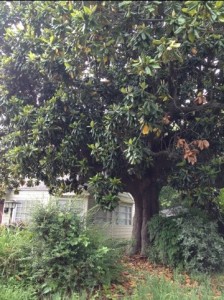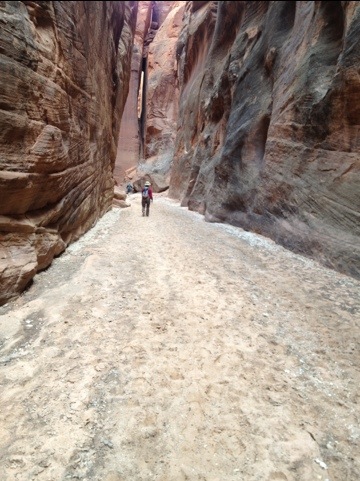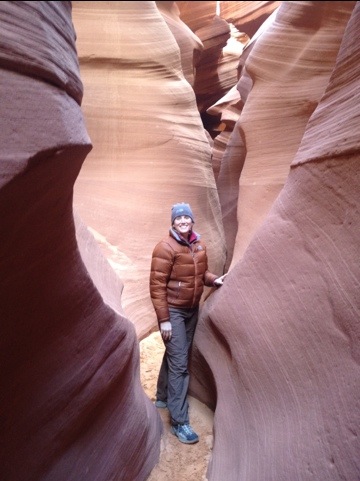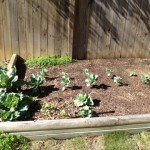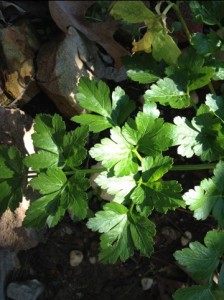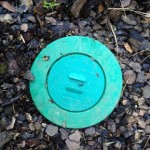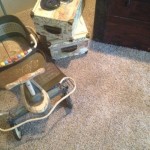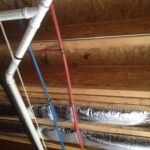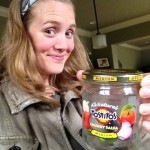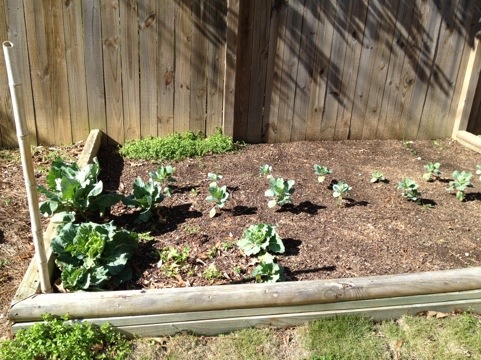It’s about becoming ”understanding and connected to the life that is giving you life”.
This was my favorite quote from my January interview with Rachel Reinhart, the Program Director with Jones Valley Teaching Farm.
Jones Valley recently changed their name from Jones Valley Urban Farm, and I learned a lot through this interview about the focus of the farm and all they’re doing to better our quality of life and the health of our families, communities and environment. I hope you will enjoy Rachel’s insights as much as I did!
(It’s so long it took me four months to transcribe it, but I think it’s well worth the read!)
Me: Why do you think what Jones Valley is doing is important?
Rachel: I think it’s important for a few different reasons. One is community redevelopment.
Jones Valley is a way to get people back outside, knowing, talking to and caring about one another. Not just at the Jones Valley location downtown, but also through what we help people get started, through other community gardens, farmers markets, food policy council…
Me: Do you feel like it reconnects people across class lines, bringing the community together as a whole, rather than keeping us so compartmentalized?
Rachel: I wish it did, but I don’t think that we’ve really realized that yet, which is part of why we do what we do.
One program I run is a community garden training program. So even if all of our community doesn’t come together, you can start a community garden in your neighborhood, bringing your neighborhood closer together. Then we facilitate a chance for your neighborhood community garden to meet with other neighborhood groups.
Me: So you’re actually showing people how to create their own community gardens?
Rachel: Yes, how to create and sustain them because the hardest part is sustaining them. And the trick to doing that is community organizing, so we also teach community organizing.
So there’s the community redevelopment part of it, and the other part of it that REALLY matters to Jones Valley and to me personally, is creating better access to fresh, healthy food. And that’s partly through the gardens, partly through the farmer’s markets, and partly through teaching people a way to value and actually get food locally that is good for them.
In Jefferson County, we’re number three in the country in obesity, number 2 in the country in childhood obesity and that number is growing. All the diet related chronic health problems that come from that, like diabetes, heart disease, stroke, etc. are all going up, and if we can combat that by providing better food and teaching people to appreciate it, find it, cook it and eat it, then we have a chance of improving their personal health as well as our community and environmental health and safety.
Me: Why do you it’s important that Jones Valley is an organic garden? Or in general why do you think organic gardening is important?
Rachel: I think it’s important for a few different reasons.
One, we’re building on an ideal appellate. And it’s not just physical health or community health. It’s also environmental and economic health. For environmental health, it’s important to be conservative and sustainable with our natural resources, such as soil and water. Organic gardening is the most careful with those resources and promotes the health of the soil.
Organic gardening has a way of building the health of the soil and the health of the plants, so that you actually leave a garden bed healthier than you found it. You’re able to repair and undo past damage.
I think that’s important because in Birmingham we are still recovering from the contamination of our industrial area. We’re still recovering from the contamination of our social set with the racial injustice that has happened and still does happen. And until we tend to our soil and our communities and our neighborhoods, I don’t see that [recovery] happening.
Plus organic gardening produces healthier food. The food is more nutrient dense. It doesn’t have the toxic contamination of synthetic pesticides, or synthetic fertilizers.
It doesn’t create a contaminated water supply by causing toxic runoff into our streams. It helps increase the water retention capacity of the soil, making it more drought tolerant. And it creates a better habitat for bugs and birds and worms, all the small creatures that not a lot of people care about!
Another thing about organic gardening, especially when it’s done on a small scale like we do it, is that it connects you back to the work of producing the food that you eat. So you suddenly become understanding and connected to the life that is giving you life.
Instead of purchasing it in a store, where it doesn’t seem to be part of your own eco-system. I mean when you have a bag of Spinach that came from Atlanta, was packaged in Michigan, and grown in California 6 weeks ago, it makes for a real different connection than planting a seed, nurturing it, watching it grow and finally harvesting it and loving it.
Me: I’ve heard a lot about the difference in the energy requirements for producing plants versus animals. What can you tell me about that?
Well, I can talk about a few different things related to that. One difference is conventional farming versus organic farming.
I recently read a wonderful article from the Atlantic monthly. They were saying that people always say that organic farming cannot feed the world, but there have been more than a hundred studies to the contrary, saying that it can. So the Atlantic mentions and links you to all of those studies. In fact, even agro-business says that not only can organic farming feed the world, but a change in our food systems that includes organic farming is going to be necessary if we’re going to feed a world of 9 billion people. Organic farming requires 50% less energy input than conventional farming because we rely on a lot less mechanization.
It’s also a lot less consumptive of water. Because on organic farms, conservation is a key ethic. So generally, you water with drip tape irrigation rather than by overhead irrigation. Less is lost to evaporation, and the water is more directed, straight the roots of the plants, rather than on the leaves where you don’t need it.
The same article in the Atlantic says that when we compare conventional farming to organic, we should really look at conventional farming as a 75 year experiment that has not necessarily turned out a positive result because we’ve only been doing this centralized factory farming of plants and animals since after WWII. It really didn’t exist like that at all before then. Everything was grown on smaller farms, and families had gardens.
And that’s just conventional versus organic, but when you’re talking about plants versus animals. It takes so much energy just to raise an animal. Even when animals are pasture raised or free range, they still require supplemental feed, medical care, housing, heat, etc., depending on the climate. Then the meat has to be butchered, processed, refrigerated, packaged, transported, etc., and every step along the way adds up.
If you’re looking at conventionally raised livestock, they are now in confined animal feeding operations, usually housed in a building with a concrete floor, where there’s timed, mechanized distribution of their feed and washing off of their waste. Animals kept in confined conditions must be given antibiotics because they’re all so close together which leads to antibiotic resistance among humans because we’ve bio accumulated their resistance by eating their flesh. They’re given hormones to increase their rate of growth, so that they can be turned into food more quickly. And now we’re looking at the possibility that their growth hormones are being bio accumulated in us. Besides that, to keep a whole lot of animals in one place, takes a whole lot of energy, a lot of water, a lot of electricity, and a lot of fuel.
Me: So what are the main programs that Jones Valley is offering right now?
Rachel: In the last year, because of a change in leadership and really a change in focus, we’ve tightened our focus. So what we’re doing now, and this is really new, within the last 6 months, is our flagship program, called the Seed to Plate Nutrition Education Program for grades K-8. And typically Seed to Plate is a field trip program to the farm, with kids coming from schools or camps. The group of kids performs a series of hands-on farm activities, a series of hands-on nutrition activities, and a series of hands-on kitchen activities. Each program is built around a theme, and the kids harvest, learn about the nutrition, and cook or otherwise prepare and eat the food that they’ve harvested.
We’ve found this program to be really powerful. We’ve already served thousands of kids and our aspiration is to serve every kid in our metro area. We want to be a regular stop on school field trips. There is no one else who really does this, and we feel it’s a critical need.
We’re seeing that it’s not being covered in the classroom, so we’ve developed a curriculum and a set of activities that we do on the farm, as well as a curriculum that the teachers can use in their classroom. And this summer we’ll be developing an Alabama Math Science Technology Initiative (AMSTI) kit for teachers to take back to the classroom to use in agriculture, food and nutrition activities. They’ll be able to then connect it back to the core curriculum that they’re required to teach.
So we’ve really narrowed our focus for that to be the main program that we offer.
One of the other two programs that we still offer is Delicious Nutritious, a cafeteria cooks training program. We’ve found in working with schools that the cafeteria staff really loves and cares about the children, and they take great pride in what they do. But most of them, with the exception of the registered dieticians and the cafeteria directors, or child nutrition directors, have never been trained in nutrition or in cooking.
So they still cook things in a way that’s not very healthy. For example taking a giant tray and filling it full of giant cans of corn, putting two pounds of butter and two cups of sugar in it. Because they haven’t been trained any differently. So when we go in and talk about the health statistics of the children and what that means as far as their ability to pay attention in the classroom, and what it means with regards to their long term health outcomes, the cafeteria staff is appalled and says, “Teach us something else to do”.
So we give them recipes on how to use things like fresh herbs rather than salt, or on how to replace some of the battered, fried things with meats and vegetables prepared in different ways. And it’s gone over great.
So far every public school cafeteria worker in Jefferson County has been through at least one training session through this program. And we plan to keep doing it. Pretty much every school that we’ve talked to would like us take over the training of their cafeteria staff. So we have to try and find funding to provide. We had a grant that funded that program, but that grant’s finishing. I don’t think we’ll be able to do them all because we don’t have the staff or the funding to serve that. But what we would like to do is train the cafeteria managers, so they can go back and educate their staff.
And the other program we’re still doing is Grow Together, which is our community garden training program.
Me: Going back to the cafeteria training program, I feel like that’s so important because you’re bringing kids out to the farm, showing them how to harvest their own food, prepare it, eat it and enjoy it. But then if they go back to a school cafeteria where nothing is fresh and everything is processed and unhealthy, then there’s a huge disconnect. It could seem very hypocritical that their school would send them on these field trips while they keep feeding them junk on a daily basis.
Rachel: For the past 2 years, we’ve had a farm to school program, which focuses specifically on changing the policies in the school regarding what the policies allow the schools to purchase and serve and also regarding what education and preparation the staff has in order to provide healthy meals.
That program is grant funded, and that funding is coming to a close. But it’s been a very successful program, so we’re looking for ways to continue that.
Me: So do you think that will come through another grant? Or will it depend on private donations?
Rachel: Everything we do is dependent on private donations, grants, and community and corporate support. There’s no one thing that we do that can live by grants alone, so we’re constantly looking for new funding opportunities.
That’s one of the reasons we still grow produce. We grow produce partly to inform and validate our educational program.
Me: Right, to show people that it’s possible. It’s hard to teach people that organic gardening is possible if you’re not doing it yourself.
Rachel: Exactly, and it’s a demonstration farm for them to see, and it’s also a hands on learning facility for them to do.
So we do that, then we also sell the produce as one of the ways to fund our mission.
And then we ask a lot of people for money! We ask for little bits, big bits, one time bits, sustained donations… and that’s just part of being a non-profit. That’s how the game works.
Me: So would you say that the garden is more about education than it is about sourcing produce to the community?
Rachel: Oh, yes, because we can’t source enough produce to feed the community in a sustained, meaningful way. Our actual mission as it stands right now is “helping Birmingham grow organic produce and healthy communities through urban farming and education. “
So it’s never been our intention to grow a bunch of food and give it away. It’s never been our intention to be a highly productive urban farm. But it’s always been our intention to teach the principles and practices that we have, the organic gardening skills and the nutrition education to promote better health in our community.
We can grow food ourselves. I don’t know that in our current culture we’re going to get back to it. But 2 generations ago, if you had land, or even just a yard, you had a vegetable garden. And you didn’t call yourself a farmer; you just had a garden.
Me: Yeah, I know in the area of Birmingham where my boyfriend grew up, he said it was just normal for everyone to have a garden, and all the neighbors would share vegetables with each other. And that was only 30 years ago.
Rachel: When I was a kid, my parents didn’t garden, but both sides of my grandparents had huge gardens, and the gardens were more important than any other part of their yard.
You know I call myself a lifelong organic gardener because my grandparents would have us picking peas as soon as we could walk. Then after I became a “greenie”, I asked my grandfather about the methods and chemicals he used in his garden. He was a very simple man that never graduated high school, but he said, “I don’t know about organic gardening. All I know is that I don’t even know what that chemical mess is. Why would you put that on your food?”
And the idea that my parents wouldn’t garden was shameful.
Me: So I’m sure Jones Valley has faced many unique challenges. Do you feel funding is the biggest challenge the garden faces right now?
Rachel: We have a few challenges. One is definitely funding because our annual budget is somewhere around $500,000 now. And that’s after shrinking our overall operation considerably. We let go of our Mt. Laurel site in November, and Jim N’ Nicks is now running it.
Me: Oh wow, that’s cool! Is that so they can grow their own food for the restaurant? Are they still using organic growing methods?
Rachel: Oh yeah, Jim N’ Nicks has a big commitment to sustainable food. They use sustainably raised pork, and as much as possible, sustainably grown vegetables. That’s just one of their personal commitments. Nick of Jim N Nick’s actually lives in Mt. Laurel.
It’s in the beginning stages of them taking it over. But they’ve developed a very successful business model, and as their success has grown, they’ve wanted to do things more sustainably. And so far that’s really been working for them.
Me: That’s neat. So was Mt. Laurel just more than Jones Valley could handle with the staff and funding that they have?
Rachel: The idea when we moved out to Mt. Laurel was that it would take us 3 years to turn a profit. But there is a lot that has to go into it as far as infrastructure, etc. The Mt. Laurel property is actually owned by Ebsco Industries and Ebsco is one of Jones Valley’s big supporters, and they subsidized that three-year process. They put a lot of money and assistance into it. Their grounds crew would come out and bush hog anything that wasn’t cultivated, and their maintenance crew would come work on the irrigation systems and any equipment failure, etc. They provided housing to our staff. And they’re tremendously successful, but over time they were looking for it to be self-sustaining. They still own the property, but they were looking at our growth to increase the funding as they decreased their commitment, but that didn’t happen. It is really, really hard to make a living as a farmer, especially if your small scale and organic. So it was consistently costing us more than we were making.
Since it was an outgrowth of our original enterprise, and although we had a few educational programs going on out there, it was mostly production. We were seeing a lot of our resources going to support that enterprise and not enough was coming back from there to support our educational mission, so eventually our board of directors decided that it was a good effort, but it was longer working for us.
When we first were offered the option to use it, we considered moving our entire operation down there. Because it’s beautiful, huge, and says, “farm.” It doesn’t say urban but it says farm. And it serves a really different population. We saw that we would lose a lot of the spirit of what we’re trying to do if we moved down there. The school buses for Birmingham City Schools can’t leave Jefferson County without a special dispensation, so if we continued to serve school children, they would have to go into Shelby County to get there. Not to say that Shelby County isn’t deserving, but it would have been a real shift in our focus. We decided that education was more important than production, and we were best suited to do that downtown.
Another challenge is that we still don’t have a building. So another thing we’re looking at is having a permanent, stable infrastructure to support our mission and activities. Right now we’re in a construction trailer that was supposed to be temporary, but we’ve been in it for four years now.
And we have holding tanks; we’re not on sewer. The tanks have to be pumped out twice a week because we’re serving lots of people. We’ll have a hundred kids a week or more that use the bathroom. If we have an event, we have to rent port-a-lets. And our events are a big part of how we bring in revenue as well as educate people about what’s happening at the farm, but if we have an event and there’s inclement weather, then we have nowhere for people to go.
We’re looking at where and how we can stabilize and grow our organization. We’re very interested in staying downtown. We love our spot, but again, we don’t own the property.
Me: So who owns the property now?
Rachel: It’s owned by the Rushton Foundation, which is a private family foundation that has very generously allowed us to use the property for years. The Rushton Foundation provides us with financial support and spiritual support. They have a commitment to revitalize the city center especially for the community residents of the city center, and they’ve all been very, very generous with all kinds of things downtown. Initially they asked us to assist with a community garden that was there when the community was temporarily displaced for the building of the Hope 6 project. And as we gardened the garden, we began looking at the whole rest of the block. We approached the Rushton’s and said, “What are you guys planning to do with the rest of this block because we’ve got some ideas!”
So we negotiated a partnership, and they’ve been so wonderful. But we have to again negotiate with them to see if this is their long-term vision for the future of the lot, and if it’s part of their vision to have a permanent structure there.
We’re turning 10 years old now, and we feel we’re an established entity. There’s a lot to figure out right now, and the garden is under new leadership. Our new leader has been meeting with a lot of people and developing a lot of partnerships, and we’ll figure out the solution. It’s just that there are a lot of moving pieces to the puzzle.
Me: So who are the full time staff members at the garden?
Rachel: We have six people on staff right now. The executive director is Grant Brigham. He started in June. I’m the Program Director. Katie Davis is our farm manager. Katie’s been there three years. And Steph Munkachy is the Assistant farm manager. She and Katie run all things growing. Bree Garrett is our Nutrition Director, and Scott Silver is the director of Farm to School.
Me: Is there anything that I haven’t asked about that you want people to know about?
Rachel: I think what I would like to see in Birmingham is this: If people believe in the kinds of things that we’re trying to do, like revitalizing communities with community gardens, like nutrition education for all these children and adults, like connecting people to food resources within their communities. If they think that’s important, they need to make that known to their decision makers. Whether it’s through their neighborhood association meetings, or as part of the Birmingham Comprehensive Planning Process.
Contact your community groups, be it through your faith community or groups of friends or city councilor or commissioner. Because we hear again and again from individuals that they really support us and think that what we’re doing is important.
But when we speak to the community decision makers and legislators, they say that they haven’t heard that from other people besides us. So I would like to see these issues supported, whether it’s through talking to decision makers, or through volunteering to start or sustain your own community garden, or supporting an initiative like ours that focuses on our food systems. We aren’t the only one out there. It could be bringing a farmers market to your neighborhood or volunteering at your local food bank.
For example, my parents’ church, Mountain Brook Presbyterian, started a community garden two years ago. And it’s thriving. They are harvesting 2500 pounds of produce from it and giving it to Magic City Harvest where it’s distributed free to low-income people.
And they aren’t the only one. There are several other churches that have started gardens. They just aren’t as big.
Me: So talking to policy makers, volunteering, doing what we can to support or sustain small community gardens…
Rachel: And also, really advocating and using your power as a consumer to demand better food.
Me: And being willing to make those changes in our own diet. Like you mentioned, understanding where our food comes from and the value that it has for our own health, and then to incorporate all of these concepts in our individual lives.
Rachel: As a consumer, the squeaky wheel gets the grease. And you can ask your supermarkets to carry local and regional produce. The supermarkets will stock what the consumers demand. And if there’s not a demand for something, its availability won’t grow. It’s not just about organic. It’s also about just having access to fresh foods.
Me: Definitely, I was talking to a retired GI pediatric physician the other day, and I was asking him what he thought about organic produce. Because in working as a Spanish interpreter, I see so many childhood cancers and other diseases that seem much more common than in the past. All I can think is that it has to be environmental. It has to be related to the air that we breathe, and the chemicals on our foods, and the prescription drugs and chemicals that end up in our drinking water from our sewers and the runoff from lawns and gardens that have been sprayed with chemicals.
And His response was, “Well, that may be true. But when we’re eating so many processed foods, and we see such a huge improvement when people just begin to eat fresh fruits and vegetables and get more exercise, that should be our primary focus. Once we’ve got that worked out, we can start thinking about eating organic foods.
Rachel: The first step before organic is eating fresh fruits and vegetables. The step before that is just eating fruits and vegetables, and so many people just don’t. If they can eat them fresh, that’s great, but if they can only eat them frozen and prepared or canned, it’s not as great, but it’s still good. If they’re not eating them at all, then they aren’t getting their nutritional needs met. They can’t do appropriate protein synthesis. They can’t heal; their immune system doesn’t work properly. Their energy level is messed up. Their neurons aren’t firing properly.
There are all kinds of things that food makes happen. This is the first generation in the history of the US in which children are not expected to outlive their children because of chronic conditions, many of which are diet related. And when you think about that, that’s really scary.
So as you can tell, Jones Valley is working hard to revitalize our communities, protect the health of our planet, and to provide nutrition education in the areas that most desperately need it. And the best thing we can do is support the things that we believe in, whether it be through financial contributions, volunteering or speaking to decision makers. We can educate ourselves and make choices in our own lives that reflect our deepest beliefs about health, community, sustainability and well-being, all with an awareness of how those choices enhance our quality of lives and of how interrelated our individual well being is to the health of the world around us!
If you’d like to visit Jones Valley’s website, it’s www.jonesvalleyteachingfarm.org.

